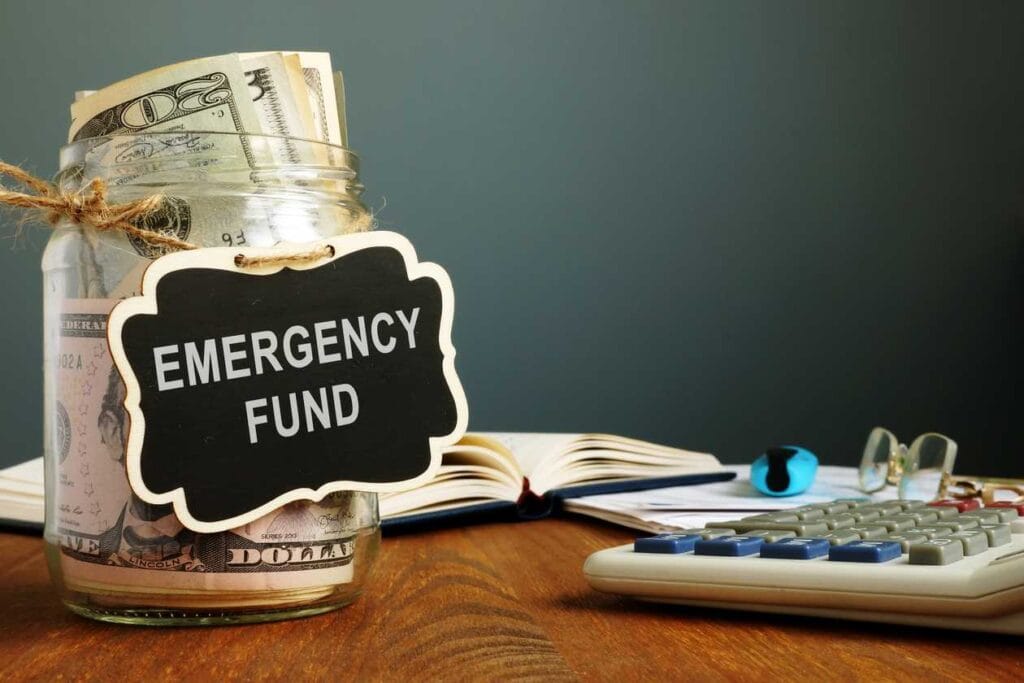Banking Terms Explained: Let’s be real, banking can feel super confusing when you don’t know the words people are using. Most of us opened our first bank account without anyone really explaining the basics. We heard terms like ACH, overdraft, or routing number and just nodded along like we got it. But inside, we were thinking, “What does that even mean?” The truth is, a lot of people feel the same way, especially if they are new to banking or just starting to manage their own money. That’s why it’s super important to learn the banking terms that keep coming up. Knowing them helps you avoid mistakes and keeps you from feeling lost when dealing with your bank.
Understanding banking basics is a big part of smart money management. If you don’t know what an overdraft is, for example, you might spend more money than you have and get hit with surprise fees. Or if you don’t know how ACH works, you might not realize why your paycheck takes a few days to show up. These small details really matter in your everyday life. Learning financial literacy doesn’t mean you need to become an expert overnight, but knowing the key words and what they mean will make you feel way more confident with your money. It’s like having a secret code that helps you unlock better control over your finances.
What’s cool is that once you start picking up these banking terms, everything starts to make more sense. Your bank statements, app notifications, and even conversations with customer service won’t feel like a foreign language anymore. Plus, it helps you make smarter choices, like picking the best bank account or avoiding unnecessary fees. So if you’ve ever felt confused by banking stuff, you’re not alone. This guide is here to break it down in plain English, so you can level up your money skills one term at a time.
Common Banking Terms Everyone Should Know

When you first start using a bank, it feels like they are speaking a whole different language. You might see words like ACH, overdraft, or APY pop up on your bank app or statement and have no idea what they mean. That can be super stressful because these banking basics actually affect your money. Learning common banking terms is really important so you don’t get caught by surprise fees or delays. Think of it like learning the rules of a game. Once you know how things work, you can play smarter and feel way more confident managing your money. Whether it’s understanding how direct deposit works or what your routing number does, these terms will help you feel in control of your own cash.
Most people never get a full explanation of banking terms when they open an account. That’s why a lot of beginners get confused about simple things like why their money is on hold or why they got charged an overdraft fee. Knowing these words helps you avoid mistakes that can cost you money. Plus, it makes things less scary when you have to talk to the bank or read your monthly statements. In this guide, we will break down the most common banking terms in plain English. You will finally get clear answers to what all those money terms mean, and you can even help your friends and family understand them too. It’s a small step that makes a big difference in your financial literacy.
ACH (Automated Clearing House)
ACH stands for Automated Clearing House, which is a system banks use to move money electronically between accounts. You might not notice it, but every time you get a paycheck through direct deposit or pay your bills online, an ACH transfer is happening. It is a safe and common way to send and receive money, but it does not work instantly. Usually, it takes one to three business days for the money to clear. For example, if you pay rent online, you might see a “pending” note for a bit. ACH transfers are super helpful for automatic bill payments and sending money between different banks. Knowing this term helps you understand where your money is and why transfers are sometimes delayed.
Overdraft: What happens when you spend more than you have.
An overdraft happens when you spend more money than you have in your bank account. Let’s say you have 20 dollars, but you swipe your card for 30 dollars. The bank covers the extra 10 dollars, but then charges you a fee for it. Overdraft fees can be really expensive and add up fast if you are not careful. Some banks offer overdraft protection, but it’s still a good idea to track your balance so you don’t spend too much. Knowing how overdrafts work helps you avoid surprise charges and keep your money safe.
Routing Number: What this number does and where to find it.
A routing number is a 9-digit code that tells banks where your account is located. It is kind of like your bank’s home address. You need your routing number when setting up direct deposit, paying bills online, or transferring money between banks. You can usually find it on the bottom left corner of your checks or by logging into your online banking app. Each bank has its own unique routing number, and it helps make sure your money goes to the right place. Learning this banking term helps you set up payments the right way.
Direct Deposit: Why it’s useful and how it works.
Direct deposit is when your paycheck or other money goes straight into your bank account without needing a paper check. It is super convenient because the money usually shows up faster, and you don’t have to wait in line at the bank. Many jobs and even government benefits use direct deposit to pay people. To set it up, you just give your employer your bank account number and routing number. It is a safe and easy way to get paid on time, and it helps you manage your money better without any extra steps.
FDIC Insurance: How your money is protected in the bank.
FDIC insurance is what protects your money if something happens to your bank. FDIC stands for Federal Deposit Insurance Corporation, and it covers your money up to 250,000 dollars per person, per bank. That means if your bank ever closes or goes out of business, your money is still safe. This is one reason why people trust banks to keep their savings secure. Not every place is FDIC-insured though, so it’s smart to check before opening an account. FDIC insurance gives you peace of mind that your cash is protected no matter what.
Minimum Balance: What banks mean and why it matters.
A minimum balance is the smallest amount of money you need to keep in your bank account. If your balance falls below this amount, the bank might charge you a fee or close your account. Some accounts, like savings accounts, require you to maintain a minimum balance to avoid fees, while others might not. Understanding minimum balance requirements is important because it helps you avoid unnecessary charges and keep your account in good standing. Always check your account details to know what the minimum balance is for your bank.
APY (Annual Percentage Yield): How your savings earn interest.
APY, or Annual Percentage Yield, shows how much money you can earn from interest on your savings in one year. It takes into account how often interest is paid, like monthly or daily, so it’s a more accurate measure than just the interest rate. For example, if you deposit money in a high-yield savings account with a 2% APY, you’ll earn 2% on your balance over the year. Understanding APY helps you compare different savings accounts and choose the best one to grow your money faster.
Mobile Banking: What it covers (apps, online transfers, etc.).
Mobile banking lets you manage your money using an app on your phone. You can check your balance, transfer funds, pay bills, and even deposit checks from anywhere. It’s super convenient and saves you time, as you no longer need to visit a branch. Most banks offer mobile banking, and it’s a great way to keep track of your finances on the go without needing to leave home.
Wire Transfer: How it’s different from ACH.
A wire transfer is a fast way to send money from one bank account to another. Unlike ACH, which takes a few days, wire transfers are usually processed the same day. This method is great for large or urgent payments, like buying a house or sending money internationally. While wire transfers are quick, they often come with higher fees than ACH transfers, so it’s important to use them when necessary.
Pending Transaction: Why some payments are delayed.
A pending transaction happens when a payment has been authorized but hasn’t fully processed yet. For example, when you buy something online, the merchant may authorize the payment, but it could take a few days for the funds to actually leave your account. During this time, the transaction shows up as “pending.” It’s normal and just means the payment is still being processed by the bank or merchant.
Why These Terms Matter for Your Money?

Banking terms like overdraft fees, routing numbers, and credit scores is key to managing your money wisely. For example, if you don’t know how overdraft fees work, you might accidentally spend more than you have in your account and end up paying a hefty fee. Learning about common banking terms helps you avoid these situations and take control of your finances. Knowing when and why certain fees are charged allows you to make smarter decisions with your money and keep it safe.
Let’s say you don’t understand how a credit card APR works and end up missing a payment. This could lead to higher interest rates, late fees, and a damaged credit score. On the other hand, if you know how interest and fees work, you can avoid getting stuck in situations that drain your bank account. When you learn these terms, you can avoid costly mistakes, set realistic financial goals, and make sure your money works for you. Understanding these terms is like having a map to guide you through your financial journey.
Quick Tips to Get More Comfortable with Banking:
Getting more comfortable with banking doesn’t have to be hard. One of the best things you can do is ask questions at your bank. Whether you’re confused about a fee or unsure how to use a mobile app, asking questions helps you learn faster. Most banks want to help their customers, so don’t feel shy. Even something simple like, “What does this charge mean?” or “How do I set up direct deposit?” can give you the answers you need. This also builds your confidence when using your account. If you visit in person, you can even ask them to explain using examples. It’s better to ask now than be confused later.
Another great way to learn is by using your bank’s online learning tools or FAQ section. These are made to help people understand banking terms and services in a simple way. Also, keeping a checklist or notes of new banking terms you hear can help a lot. Write them down and look them up when you’re home. Terms like “overdraft,” “APR,” or “balance” are common and easy to remember with time. This habit makes banking feel less scary. With practice, online banking and handling your money will start to feel like second nature.






